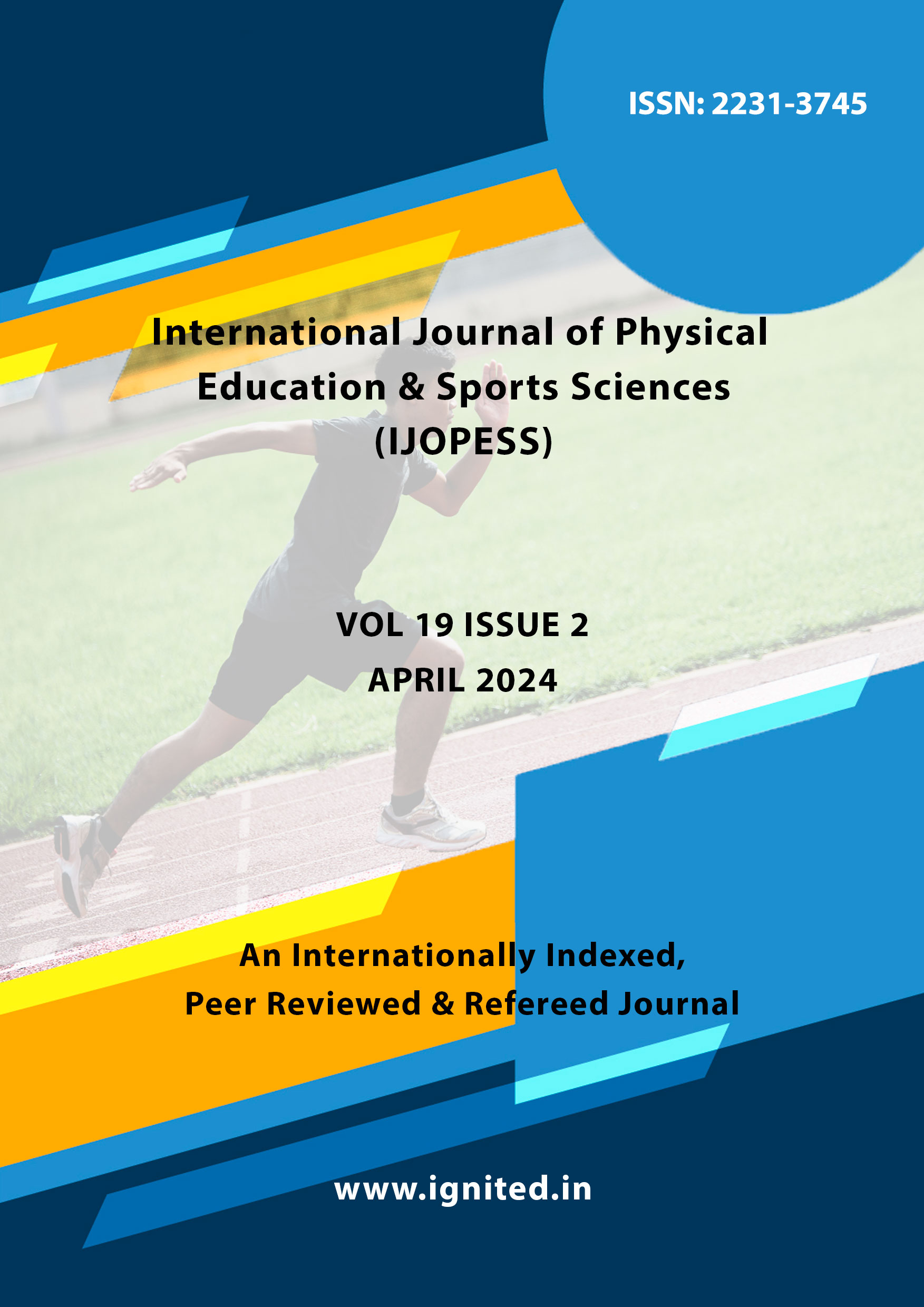Comparative Analysis of Anticipation and Balance Abilities between All India University Cricket and Softball Players
Main Article Content
Authors
Abstract
A study was conducted to compare the balance and anticipation abilities of cricket and softball players. The results showed that softball players significantly outperformed cricket players in both areas. The mean balance ability score for softball players was 88.800, compared to 84.000 for cricket players. This difference was statistically significant, as confirmed by a t-test (t = 2.15962, p = .037177). Similarly, softball players had a higher mean anticipation ability score of 0.634 compared to 0.563 for cricket players. This difference was also statistically significant (t = 2.60058, p = .013186). These findings suggest that the nature of softball may foster greater development of balance and anticipation skills compared to cricket. The study's results have implications for training and coaching in both sports. Coaches and trainers can use this information to tailor their programs to improve these specific abilities in cricket players or further enhance them in softball players.
Downloads
Article Details
Issue
Section
References
- Bozkurt, S., Erkut, O., & Akkoç, O. (2017). Relationships between static and dynamic balance and anticipation time, reaction time in school children at the age of 10-12 years. Universal Journal of Educational Research, 5(6), 927-931. https://doi.org/10.13189/ujer.2017.050603.
- Ceylan, H. İ., & Günay, A. R. (2020). Positional differences in anticipation timing, reaction time, and dynamic balance of American football players. Pedagogy of Physical Culture and Sports, 24(5), https://doi.org/10.15561/26649837.2020.0503.
- Kiss, R., Schedler, S., & Muehlbauer, T. (2018). Associations Between Types of Balance Performance in Healthy Individuals Across the Lifespan: A Systematic Review and Meta-Analysis. Frontiers in physiology, 9, 1366. https://doi.org/10.3389/fphys.2018.01366.
- Kumar, A., & Bhukar, J. P. (2020). Comparative study of psychomotor abilities between inter-university players and non-inter-university players in cricket. Indian Journal of Physical Education, Sports Medicine & Exercise Science, 18(Special Issue 1), 1. ISSN 0976-1101.
- Liu, W. (2022). Repercussions of balance training on soccer players’ lower limb injuries. Revista Brasileira de Medicina do Esporte, 28(6), 810-813. https://doi.org/10.1590/1517-8692202228062022_0083.
- Mocanu, G. D. (2022). Optimization of body balance indices according to body mass index categories during physical education lessons for university students. Pedagogy of Physical Culture and Sports, 26(4), 233-243. https://doi.org/10.15561/26649837.2022.0403.
- Narayanan, M., Srinivasan, M., Subash, P., & Arunsuriya. (2024). Comparison of anticipation skills and reaction time in normal adults using a constructed anticipation timer. BOHR International Journal of Current Research in Optometry and Ophthalmology, 3. https://doi.org/10.54646/bijcroo.2024.37.
- Varbanov, I., & Brestnichki, G. (2022). Study of coordination abilities and their relationship to anticipation in athletes. National Sports Academy “Vassil Levski”, 29-33. https://doi.org/10.37393/ICASS2022/04.
- Weissensteiner, J., Abernethy, B., Farrow, D., & Muller, S. (2009). The development of anticipation: A cross-sectional examination of the practice experiences contributing to skill in cricket batting. Journal of Sport & Exercise Psychology, 30(6), 663-684. https://doi.org/10.1123/jsep.30.6.663.
- Williams, A. M., & Jackson, R. C. (2019). Anticipation in sport: Fifty years on, what have we learned and what research still needs to be undertaken? Psychology of Sport and Exercise, 42, 16-24. https://doi.org/10.1016/j.psychsport.2018.11.014.

